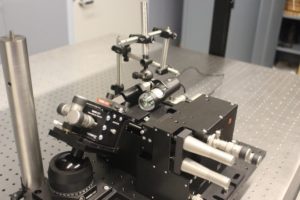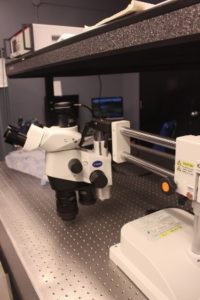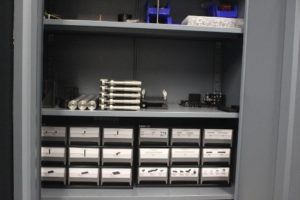 Our Optics lab was set up as part of the recently established CFI-funded (over $4.2M in funding) Suborbital Payload Research Centre (SPaRC). It was designed as an extension on York's existing space-qualification facilities to provide the capability to fully characterize the response of the payload to the space environment, as well as perform instrument calibration prior to flight. The facility has the capability to fully characterize the spectral response of optical instruments, including spectrophotometers. This unique capability will allow the facility
Our Optics lab was set up as part of the recently established CFI-funded (over $4.2M in funding) Suborbital Payload Research Centre (SPaRC). It was designed as an extension on York's existing space-qualification facilities to provide the capability to fully characterize the response of the payload to the space environment, as well as perform instrument calibration prior to flight. The facility has the capability to fully characterize the spectral response of optical instruments, including spectrophotometers. This unique capability will allow the facility

to supply first-class instrument calibration for space hardware, which will in turn produce cutting-edge performance during mission operations. Key equipment in the payload calibration and test laboratory include various optomechanical stages and components including but limited to (1,3, and 6 axis) linear stages, articulated bases, and tip-tilt stages. There is also equipment for testing of integrated photonic chip, including waveguide holders, fiber alignment stages and other fiber optomechanical solutions. In addition, the lab has the capability to create and test various free space optical circuits using the various optical stands and stages available. All these optical testbeds can be built on our optical tables which have vibration isolators to help minimize any external mechanical perturbations. The optical calibration lab also has access to various optical components including tunable lasers, laser diode controllers, various fiber components, IR and visible cameras, spectrometers, and 2 microscopes. All this equipment allows  for a wide range of possible applications and test procedures which allow us to create, test, and calibrate various optical instruments which can range from the size of an entire optical table, to one that is smaller than a 10 cent coin.
for a wide range of possible applications and test procedures which allow us to create, test, and calibrate various optical instruments which can range from the size of an entire optical table, to one that is smaller than a 10 cent coin.

